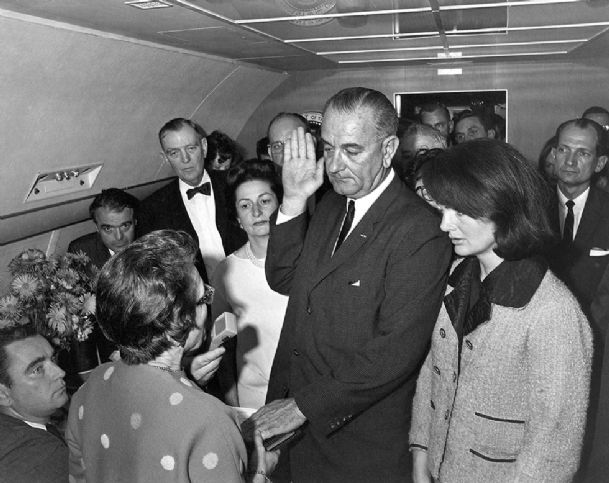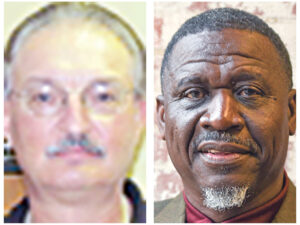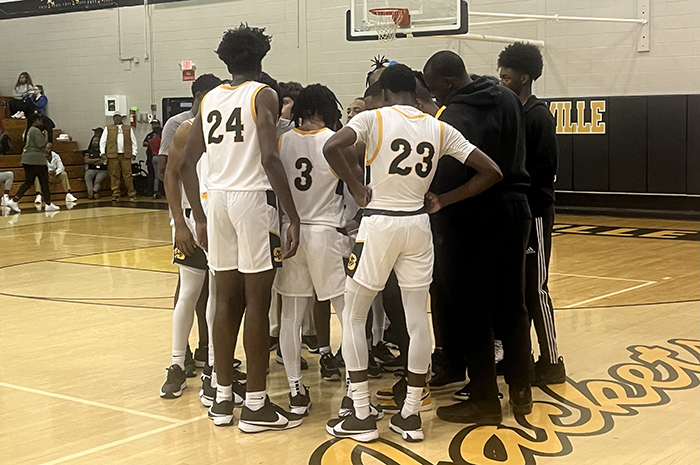NEW YORK — As President John F. Kennedy lay dying 50 years ago at Parkland Memorial Hospital in Dallas, Vice President Lyndon Johnson was hurried into a small room in Minor Medicine, where he stood silently against a wall. After a wait of some 35 minutes, presidential aide Kenneth O’Donnell entered and approached Johnson, who had been two cars behind Kennedy when the shots were fired in Dealey Plaza.
“He’s gone,” O’Donnell told him.
Almost instantly, onlookers would recall, LBJ’s drooping features hardened into his “deciding expression.” Johnson’s wife, Lady Bird, would describe his look as “almost a graven image of a face carved in bronze.” Johnson, a vice president so estranged from the White House that he feared for his job, was now the most powerful man in the country.
“This was a day not only when a president was killed, but a president was created,” says Johnson biographer Robert Caro.
Johnson was the last of eight vice presidents to succeed a president who died in office. Some became major presidents in their own right, others were soon forgotten, and at least one was lucky to remain in office.
Vice presidents, often outsiders in the administration, have been humbled, traumatized and energized by what Caro has called “the passage of power.”
William Henry Harrison was the first president to die in office, in 1841, succumbing to pneumonia just one month into his administration. News traveled by the speed of horses. Two State Department envoys rode to Vice President John Tyler’s plantation in Williamsburg, Va., and arrived at dawn. They knocked softly on the door, then pounded on it when no one answered.
They were finally greeted by Tyler, who was still wearing his bedtime clothes, and handed him a short letter stating that “William Henry Harrison, late President of the United States, has departed this life.”
The letter said nothing about Tyler’s being president, and the Constitution at the time did not state clearly whether he was the president or simply the acting president. Tyler soon settled the question himself.
“I shall be pleased to avail myself of your counsel and advice,” he declared during a meeting with Harrison’s cabinet members. “But I can never consent to being dictated to. I am the president and shall be responsible for my administration.”
When Warren Harding died in San Francisco in August 1923, Vice President Calvin Coolidge was on the opposite end of the country, visiting his father at their homestead in Vermont. There was no long distance telephone service in the Coolidge farmhouse, and the elder Coolidge was the first to learn of the news, via a local phone exchange. It was nighttime and a shaken John Coolidge climbed the stairs to wake his son and tell him that he was the president.
“I knew that something of the gravest nature had occurred,” Calvin Coolidge would later write of seeing his father, a notary public who administered the oath of office.
The transfer was equally poignant in 1945, when Franklin Roosevelt died in Warm Springs, Ga. Vice President Harry Truman was in Washington and summoned to the White House. Unaware of the news, guessing he would be meeting with the president, Truman was brought up to the sitting room of first lady Eleanor Roosevelt.
“Harry, the president is dead,” she told him.
“Is there anything I can do for you?” a stunned Truman responded.
“Is there anything we can do for you?” she answered. “For you are the one in trouble now.”
Instant change from one president to another can be clumsy, or disastrous, if only because vice presidents are often chosen for short-term strategic reasons — such as regional or ideological balance — rather than compatibility.
Tyler became so estranged from his fellow Whigs that he was kicked out of the party. When Millard Fillmore succeeded Zachary Taylor, who died in 1850, he fired Taylor’s entire cabinet, then tried (and failed) to get the cabinet back. Vice President Andrew Johnson was advised not to remain long in the room where a mortally wounded Abraham Lincoln was being treated because first lady Mary Todd Lincoln despised him.
No vice president made a more dynamic transition or fell further than Lyndon Johnson, who orchestrated landmark legislation on civil rights, health care, education and other areas only to see his presidency destroyed by his expansion of the Vietnam War. A century earlier, Andrew Johnson was nearly kicked out of office by congressional Republicans angered by his hostility to blacks and sympathy for the Southern states defeated in the recent Civil War.
The only vice president who thoroughly overshadowed his predecessor was Theodore Roosevelt, governor of New York and a fiery reformer who so frightened the state’s party machine officials that they engineered his selection in 1900 as incumbent William McKinley’s running mate.
When McKinley was shot in September 1901 and died a week later, GOP boss Mark Hanna lamented over the “damned cowboy” now in charge. Roosevelt, who became synonymous with the Progressive era of the early 20th century, initially promised to continue McKinley’s more conservative policies “absolutely unbroken.” He confided his real intentions to a gathering of journalists at the White House.
“I am president,” he told his visitors, “and shall act in every word and deed precisely as if I and not McKinley had been the candidate for whom the electors cast the vote for president.”
You can help your community
Quality, in-depth journalism is essential to a healthy community. The Dispatch brings you the most complete reporting and insightful commentary in the Golden Triangle, but we need your help to continue our efforts. In the past week, our reporters have posted 45 articles to cdispatch.com. Please consider subscribing to our website for only $2.30 per week to help support local journalism and our community.







